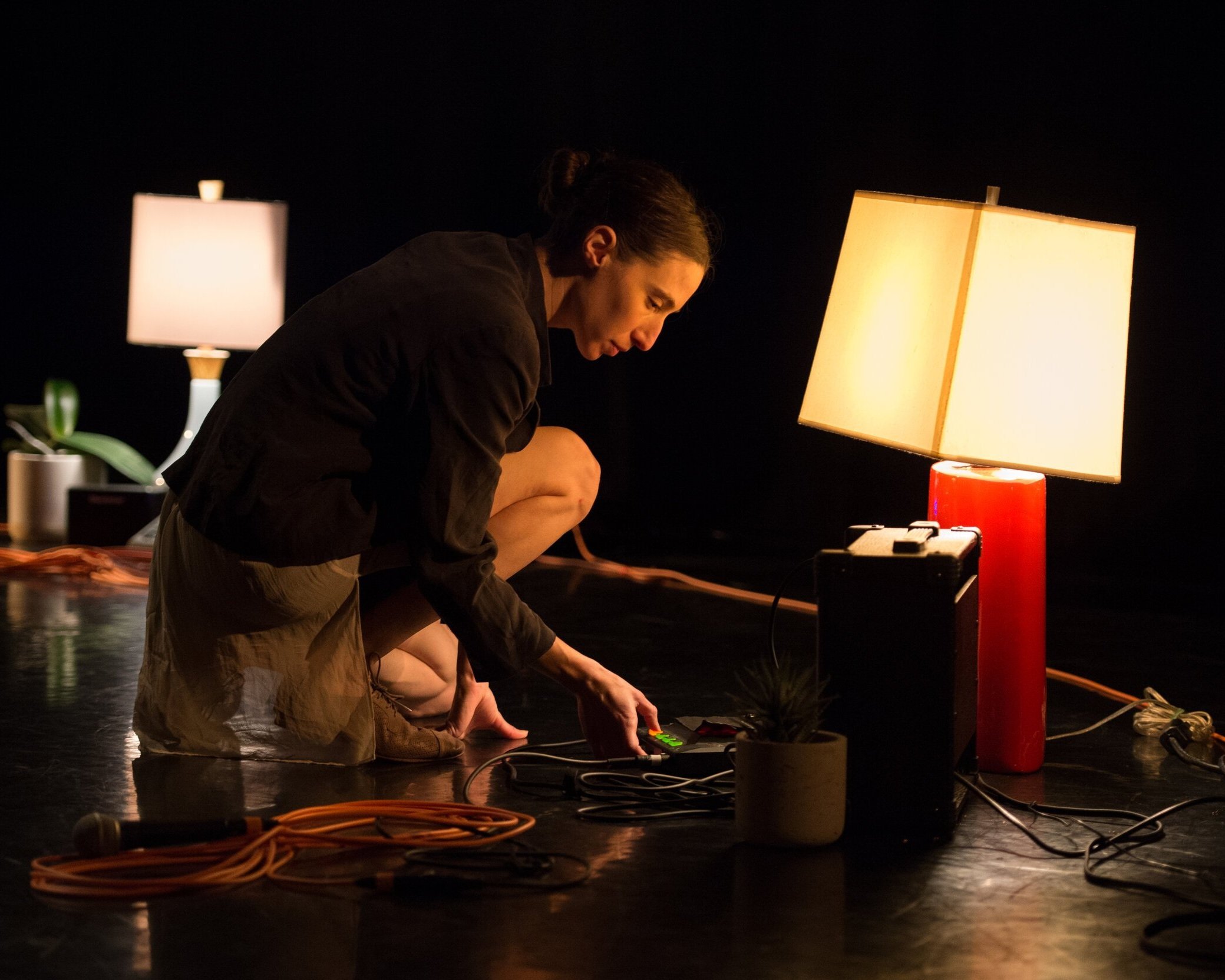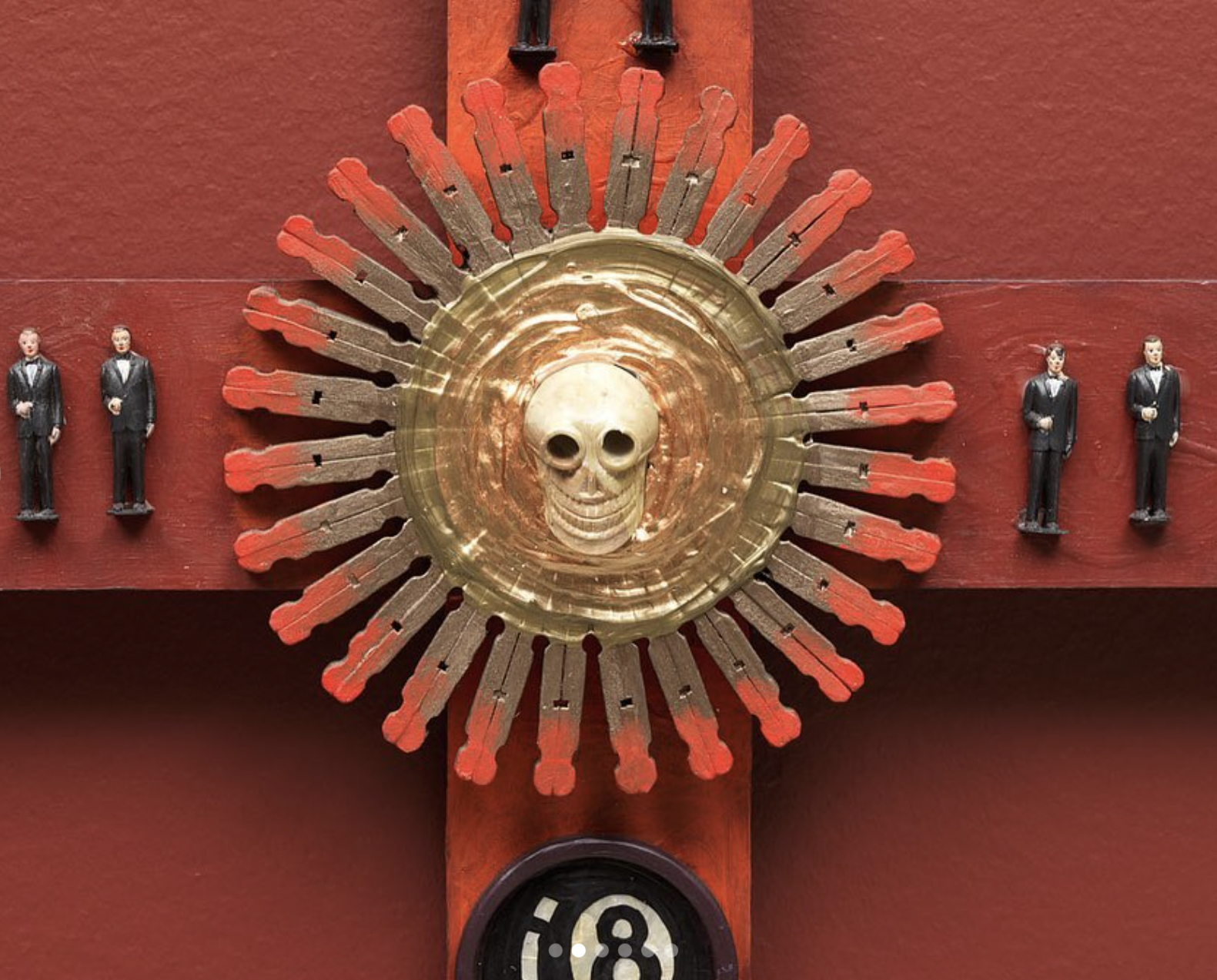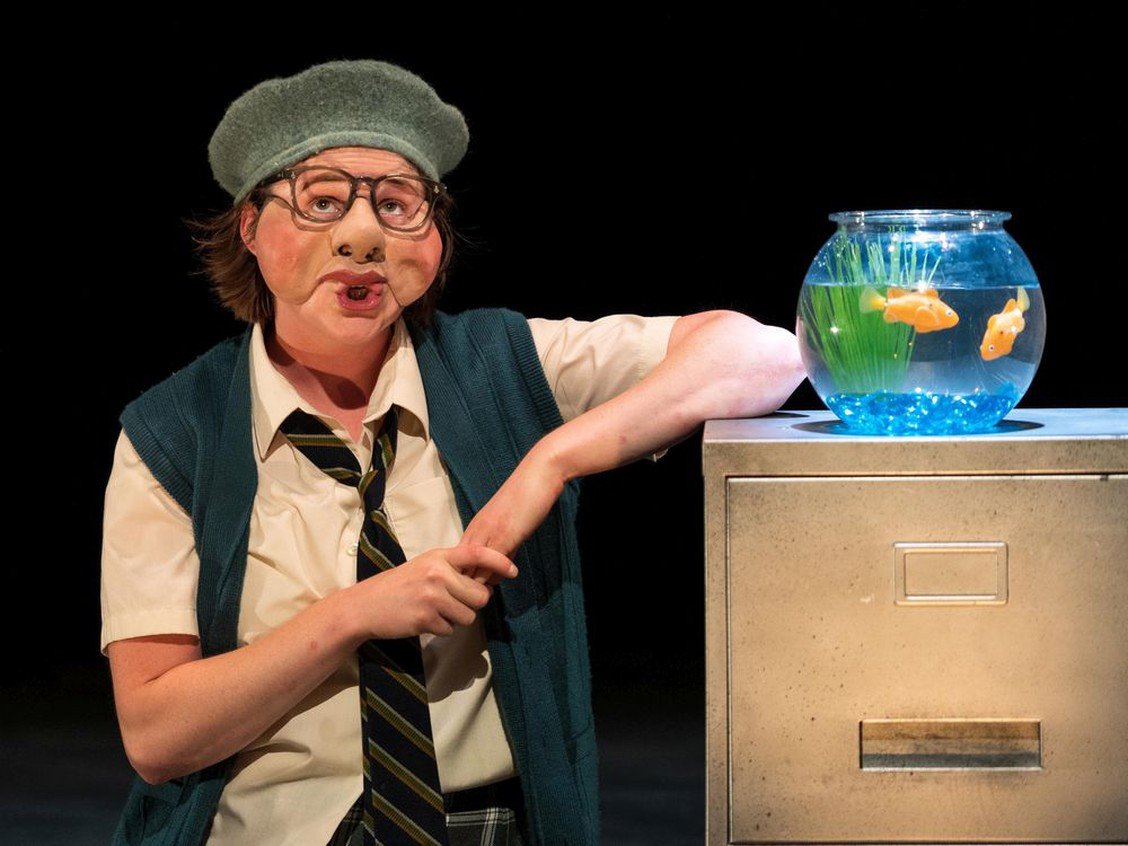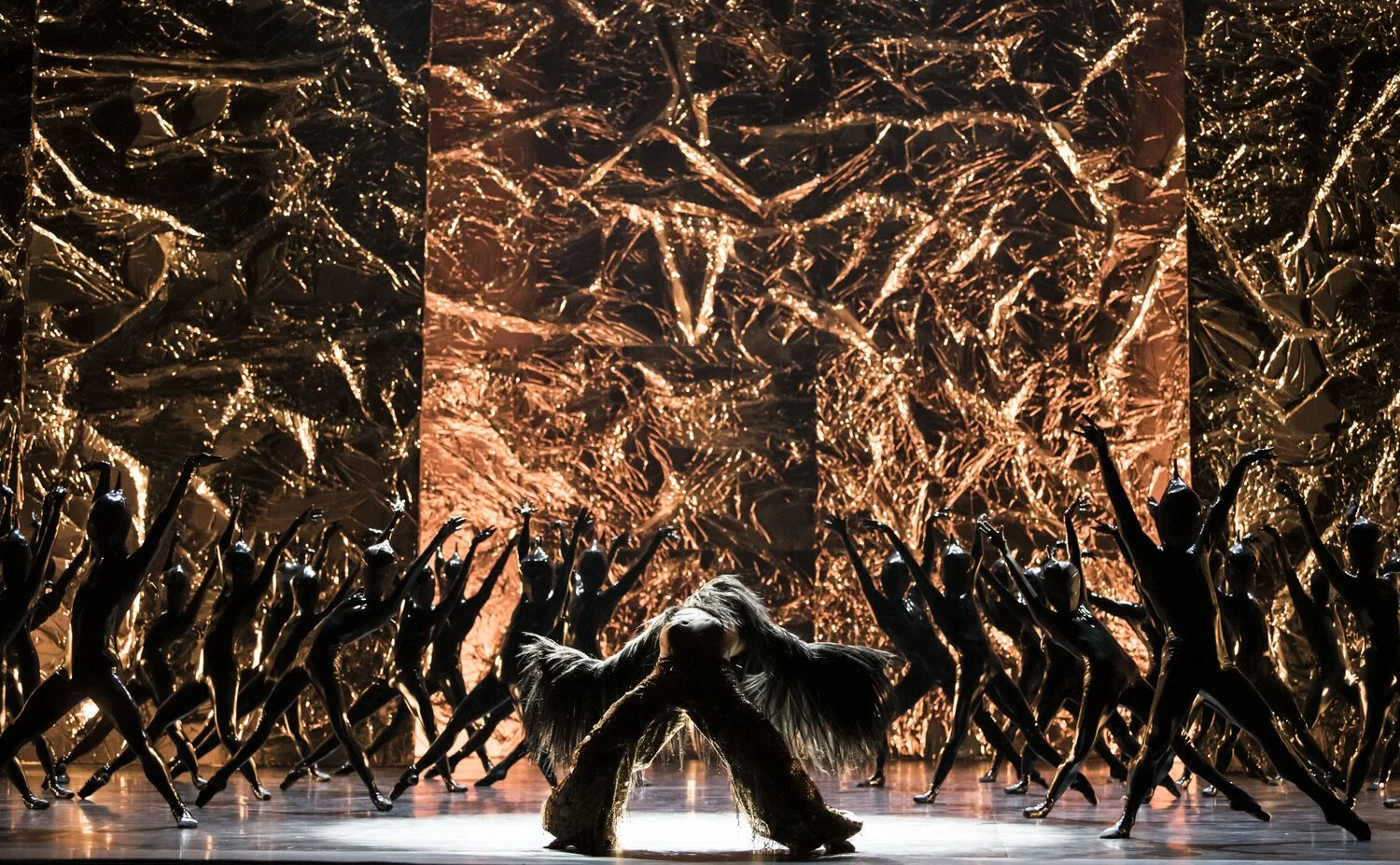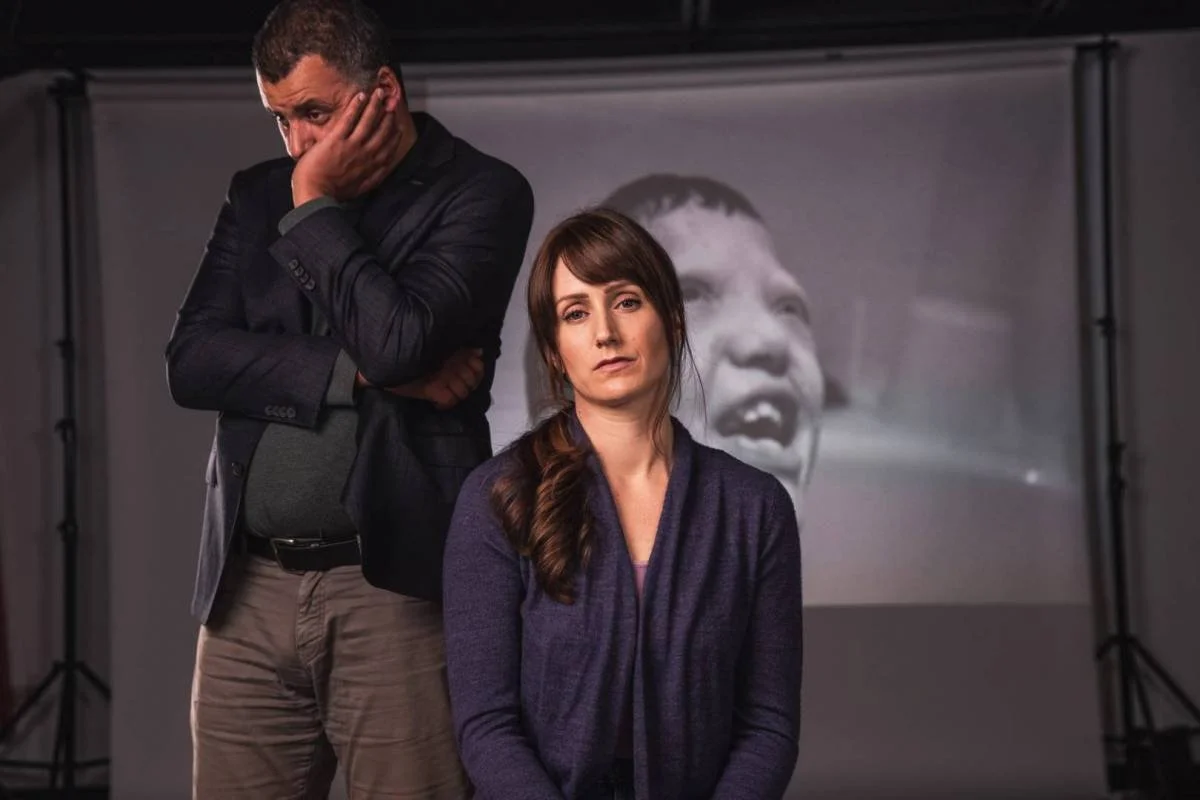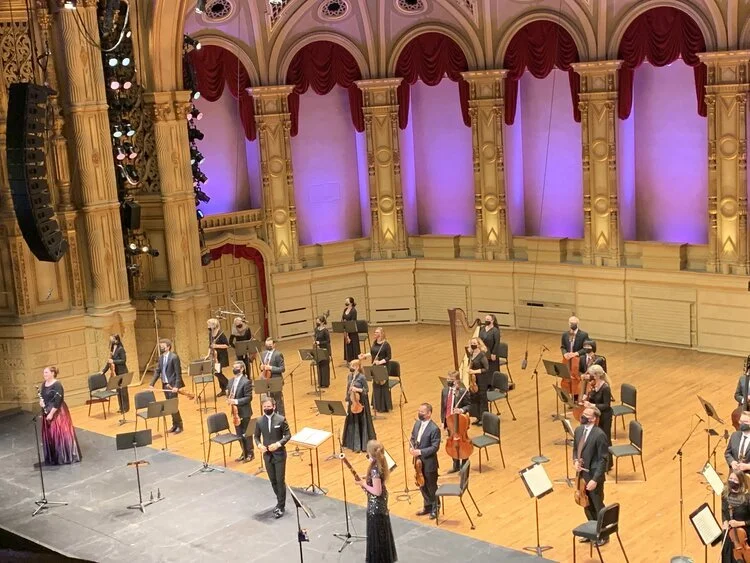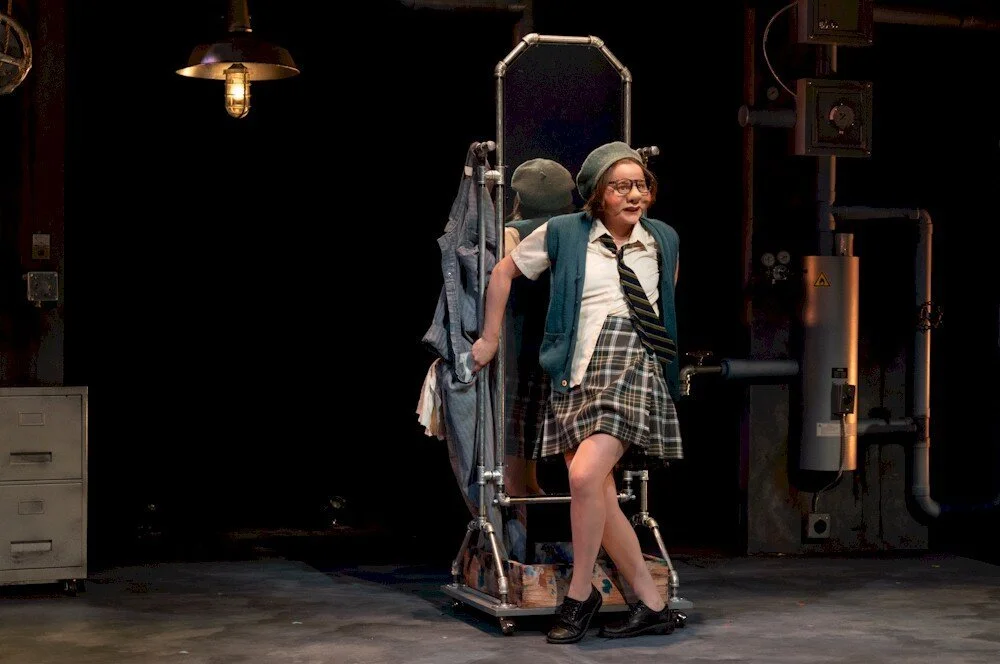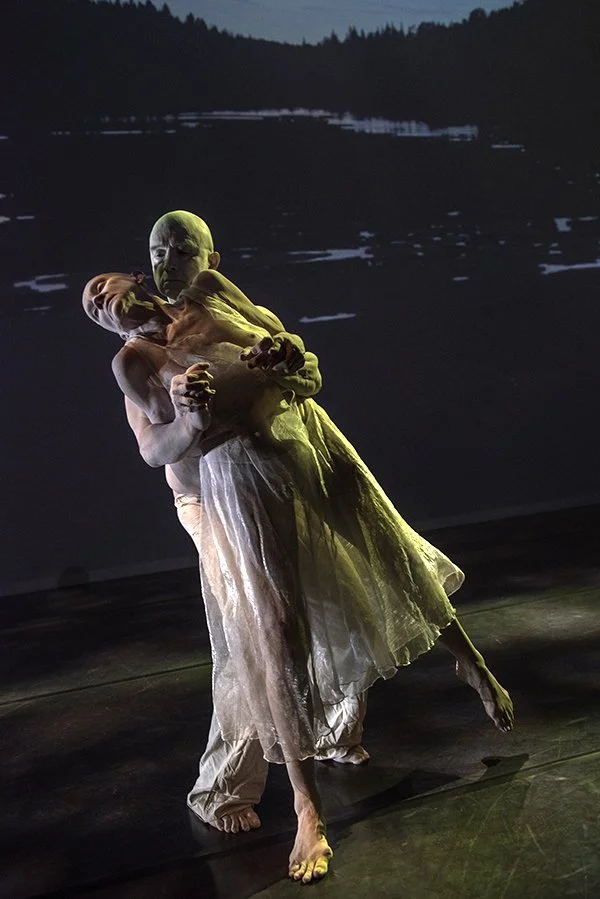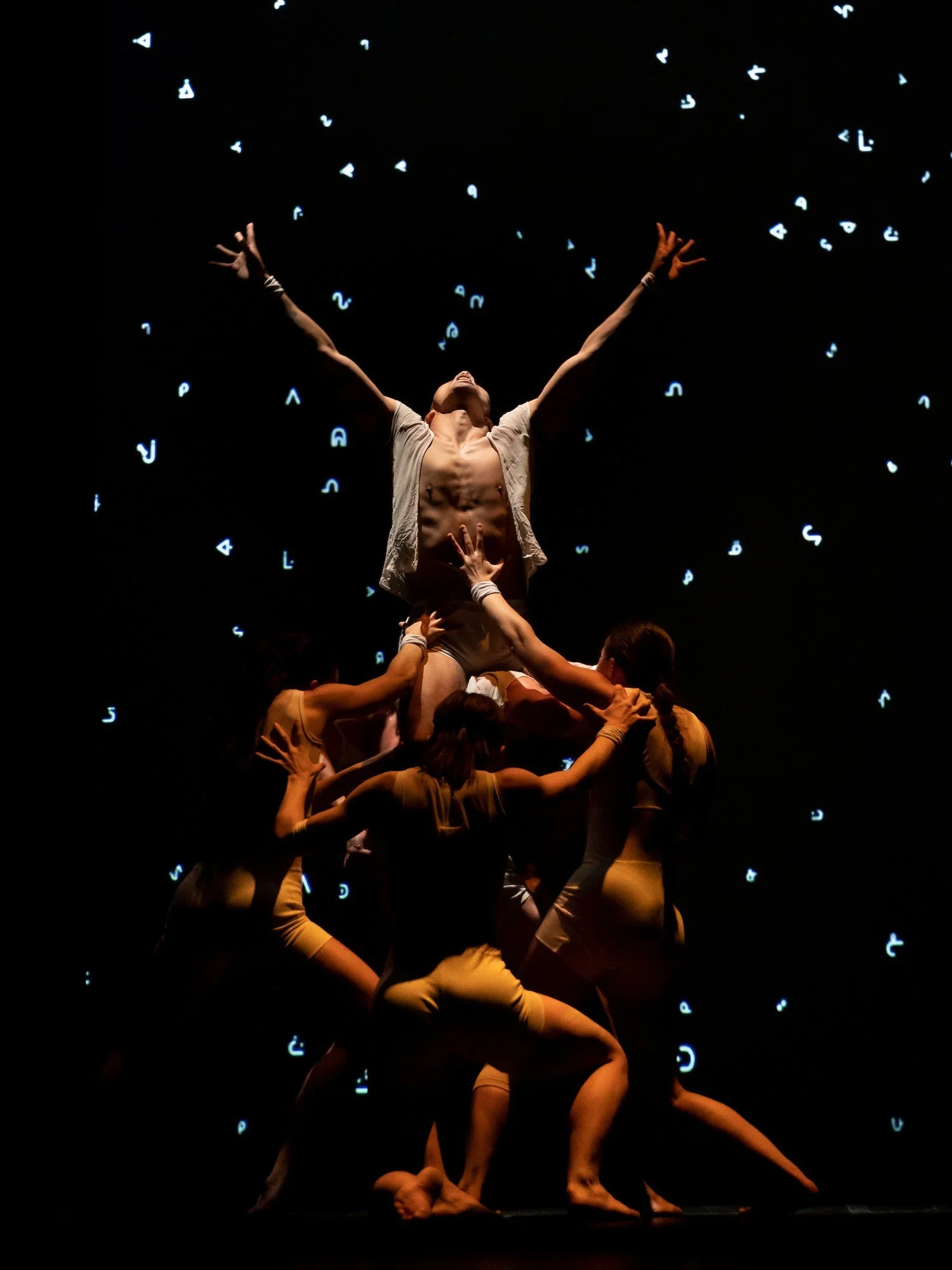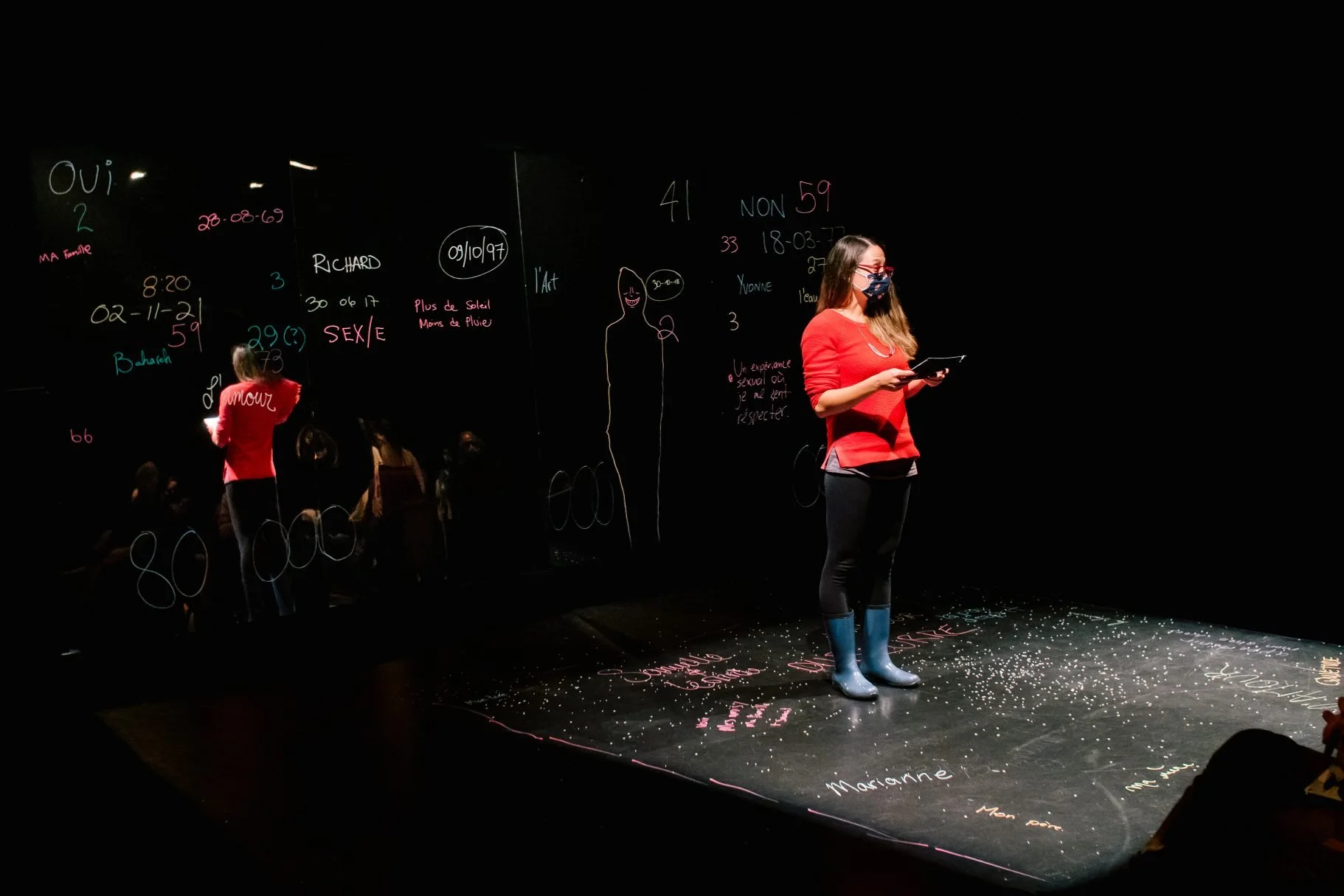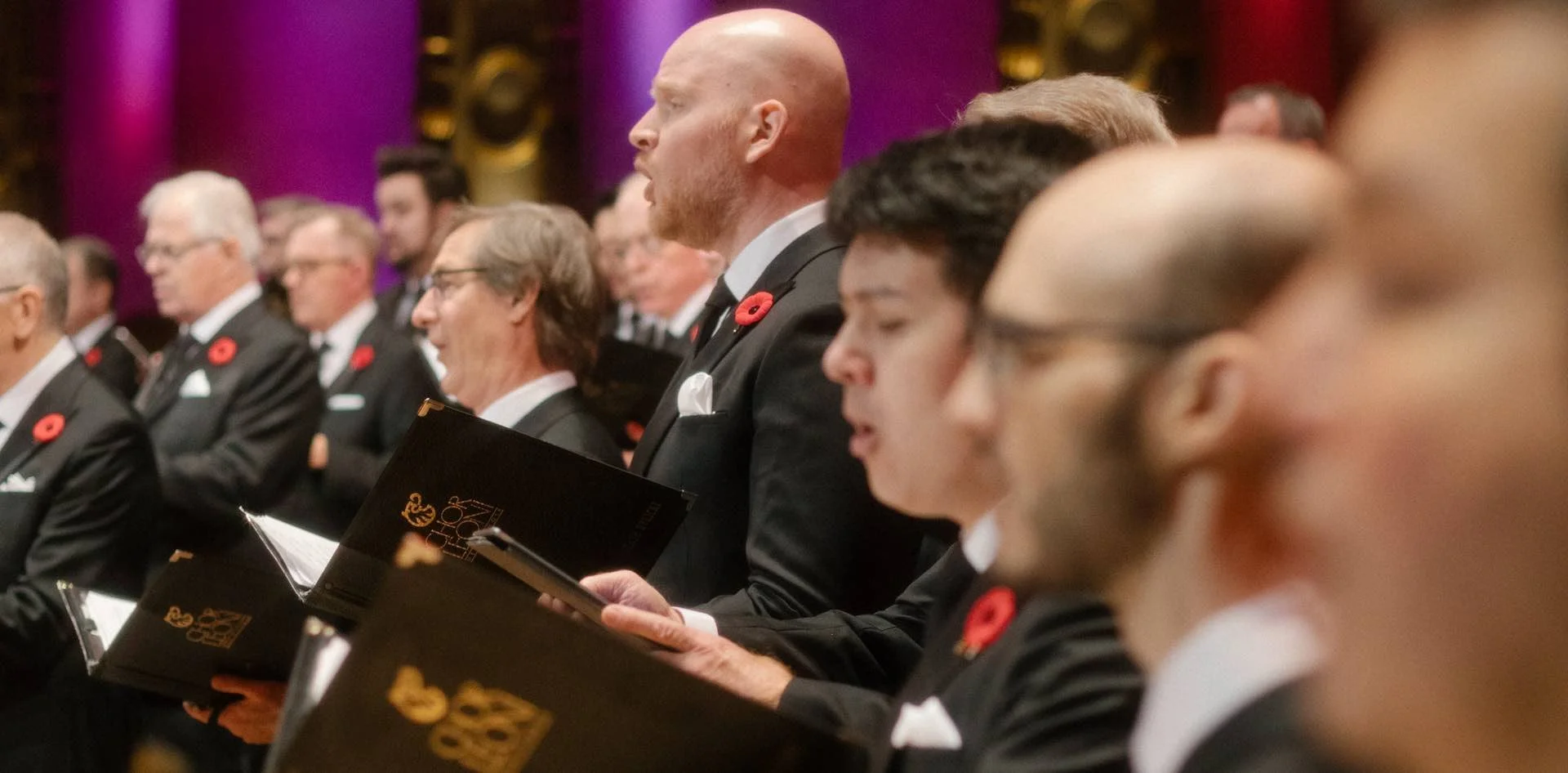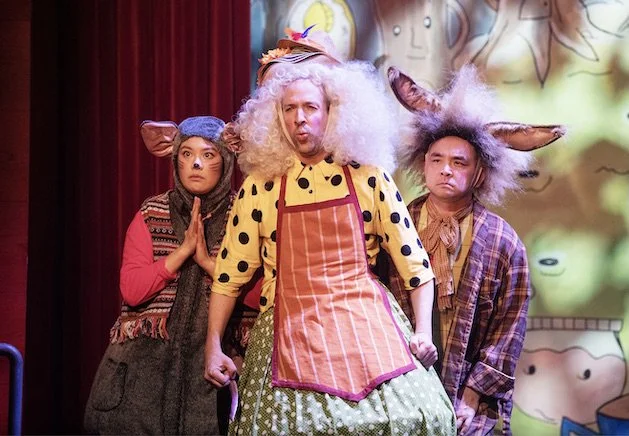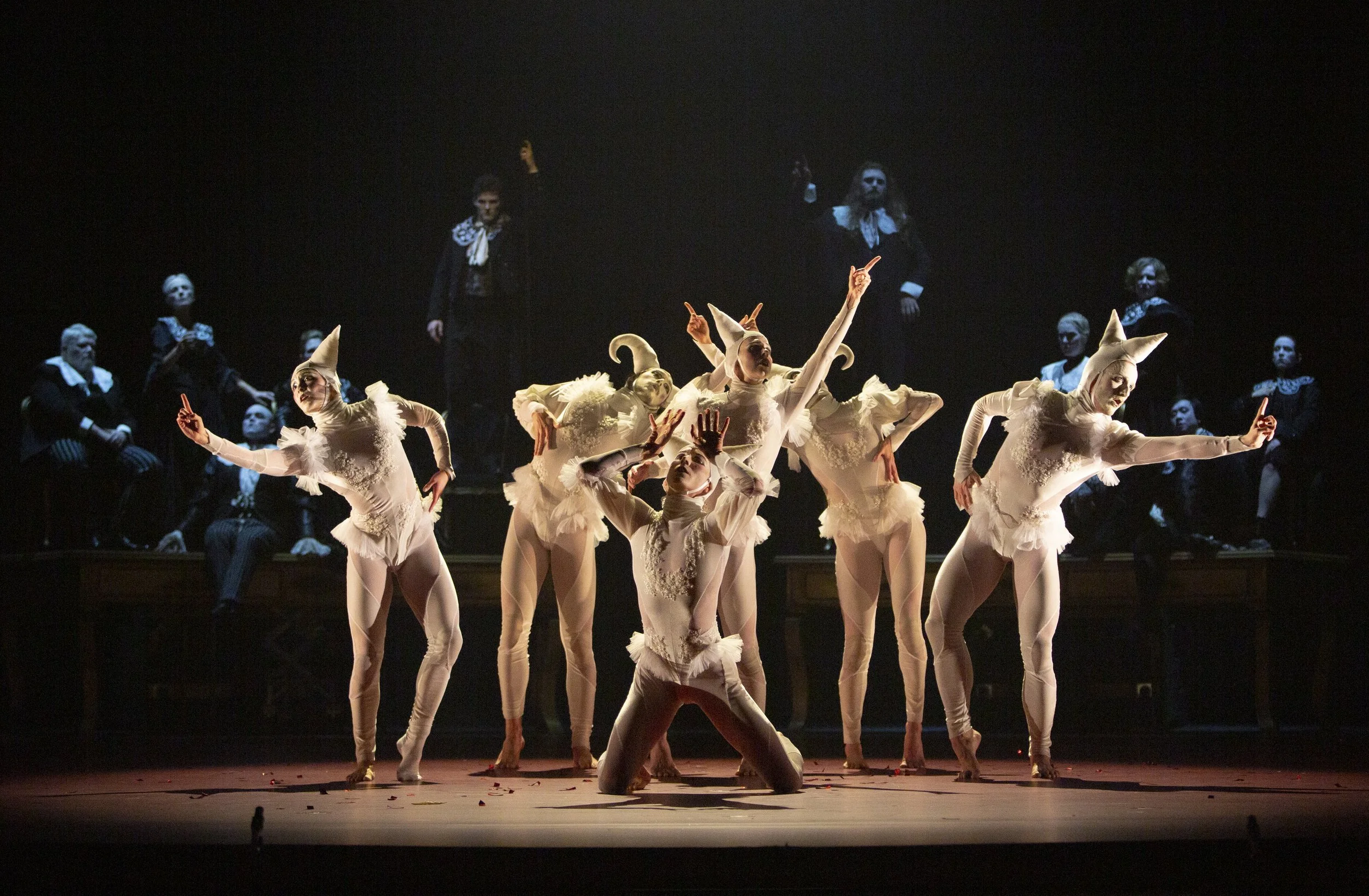2021 in review: A few of the year's most memorable moments in Vancouver theatres and galleries—live and online
From sudden slow-motion dance sequences to mindblowing assemblages, these fleeting artistic scenes stayed with us
Vanessa Goodman was mesmerizing on the microphone in Graveyards and Gardens. Photo by David Cooper
Jan Wade’s Epiphany at the VAG’s Soul Power show. Courtesy of the artist. Photo by Ian Lefebvre, Vancouver Art Gallery
Lili Beaudoin’s masked tour de force in I, Claudia at the Arts Club. Photo by Moonrider Productions
SOMETIMES A YEAR comes down to its moments. And 2021 served up almost every imaginable scenario in the realm of live arts. But if life in the era of COVID-19 has proven anything, it’s that what once seemed unfathomable could in fact be just around the corner.
Who knows what 2022 will bring? What we do know is that, whether on-stage, in a gallery space, or through a screen, local artists pushed through the pandemic in all sorts of daring and creative ways, delivering innovative, moving, and sometimes hilarious performances against all odds.
Here are just a few—but by no means all—of our favourite moments on stages and in galleries from 2021.
Graveyards and Gardens
Music on Main and the PuSh International Performing Arts Festival, online, January
Dance artist Vanessa Goodman’s collaboration with Pulitzer Prize-winning composer Caroline Shaw was one of the best streamed productions of the year. Goodman moved amid a cozy rumpus-room circle of potted plants, homey lamps, Orange Crush amps, and assorted other vintage sound machines. But no moment was quite as exhilarating as when Goodman vocalized into the microphone, a vocoder warping the sound as it echoed and looped through the space and beyond, out across the interweb, layering to dazzling effect with Shaw’s own pretaped crystalline voice. Mesmerizing.
The wild universe at the end of Crystal Pite’s Body and Soul. Photo by Julien Benhamou
Body and Soul
Crystal Pite at the Paris Opera Ballet, via DanceHouse, February
At the height of winter lockdown, DanceHouse came to the rescue, transporting us to the Paris Opera Ballet’s gilded Palais Garnier, and giving us the chance to see Vancouver dance star Pite’s spectacular Body and Soul (filmed in pre-pandemic 2019). The most mind-blowing moment? The third act’s trip into the alien and unknown, with creatures right out of a Guillermo del Toro nightmare, dancers skittering en pointe with threatening black pincer-arm extensions—all busting moves with a hairy, Chewbacca-in-bellbottoms beast whose animal abandon broke free of the insect brain.
The Boy in the Moon. Photo by Matt Reznek
The Boy in the Moon
The Cultch and Neworld Theatre, online from the Historic Theatre, May
This emotionally engrossing story of two parents struggling to raise a boy with severe disabilities had many devastating moments. But the one that best captured the nuance and intimacy of the superb acting came between performers Marcus Youssef and Meghan Gardiner recounting a doctor’s words at the birth of their characters’ son: “This child cannot live without extraordinary measures.” Showing the variability of memory and the subtle differences in their world views, Youssef’s slightly cynical Ian saw it as a hint to let the child go, while the more calmly optimistic Schneller recalled it as a rally to fight onward. Complex and brutally honest.
Nick Cave’s Soundsuit at the Polygon Gallery’s Interior Infinite exhibit. Photo by Janet Smith
Nick Cave’s Soundsuit
Interior Infinite, Polygon Gallery, June
The prize piece in the Polygon Gallery’s fantastical, gender-bending Interior Infinite show last summer was Soundsuit by Nick Cave (not the black-clad Aussie singer but the celebrated Black American artist). Part shamanic disguise, part carnival costume, part wildly artful fashion creation, the suit featured hundreds and hundreds of carefully sewn-on buttons, and it opened up into a headpiece that jutted out like a giant hairy speaker or a surreal fuzzy eye. Soundsuit plays with obscuring the wearer’s gender, class, and race, and for curator Justin Ramsey, it was the leaping-off point for the exhibit’s colourfully thought-provoking exploration of disguise and identity, at a crucial precipice of societal change.
The VSO’s first concert back at the Orpheum in 15 months. Photo by Janet Smith
Vancouver Symphony Orchestra
Orpheum Theatre, June
The VSO has had many memorable performances at the Orpheum since lockdown, but nothing matched the electricity of its very first return to the historic venue in 15 months. Wind instruments took the fore in the double bill: breath has been taboo in these airborne-virus times, and it was thrilling to see it reclaimed by an unmasked (but safely distanced), virtuosic pair of female artists—clarinetist Jenny Jonquil and bassoonist Julia Lockhart. Manoeuvring their instruments like dance partners, they performed Richard Strauss’s Duet Concertino for clarinet and bassoon, with string orchestra and harp, a piece inspired by Beauty and the Beast—the flowing clarinet and strings met with the arrival of the bassoon’s “bear”. Strauss composed the score in the wake of the destruction of World War II, and the concertino spoke directly to a divided planet dealing with an unexpected “beast”, and pulling itself out of a pandemic, too.
Jan Wade’s Epiphany, 1990–2021, wood, acrylic paint, found objects. Courtesy of the Artist, Photo by Ian Lefebvre at the Vancouver Art Gallery
Jan Wade: Soul Power
The Vancouver Art Gallery, July
Here was an exhibit that celebrated the in-person experience—inviting long, curious inspection of the thousands of tiny, meaning-laden found objects in this under-sung Vancouver artist’s assemblages. When the show opened in the summer, that was most evident with Epiphany—a huge wall filled with dozens and dozens of crosses. For Wade, the symbol represents the “ultimate pop icon”, one that’s incidentally Christian, transforming in meaning throughout history. Wade reclaims and reinvents crosses as a symbol of cultural survival, adorning them with good-luck charms, buttons, and all-seeing eyes, sometimes referring to the way African spirituality was absorbed into Christianity after slavery. Scrabble letters, little white-male wedding-cake figures, wooden hands hoisted in peace symbols and righteous pointed index fingers: elements accumulate to speak across centuries—from slavery to Black Lives Matter—each cross telling its own riveting and complex story. And then there’s just the sheer marvel of seeing this many tiny objects so meticulously patterned. (The show runs through March 2022).
Lili Beaudoin as the awkward preteen title character in I, Claudia. Photo by Moonrider Productions
I, Claudia
The Arts Club Theatre, BMO Theatre Centre, August
Actor Lili Beaudoin put in an epic performance as the pre-pubescent heroine in this hugely enjoyable one-woman play at the Arts Club. And there was no better proof than watching her squeeze comedic magic out of the simplest prop: a juice box. Her ebullient and awkward 12-and-three-quarters-old title character slurped from it long and loudly to soothe her hyper antics or to create a dramatic pause in her storytelling, or squished it as an outlet of frustration. A Tetra Pak tour de force.
The Magic Hour. Photo by Kim Collier
The Magic Hour
The Electric Company Theatre, Innovation Lighting, and Presentation House Theatre, at Presentation House Theatre, August
The production created by Kim Collier with Kendra Fanconi was designed as an immersive experience for one as you made your way through each and every room of the 1902 building. We loved the re-created kitchen, where gadgets and small appliances like blenders came to life and teeny scenes were mounted in an oven and refrigerator freezer—just like the show itself, it gave everyday existence new meaning and magic.
Kokoro Dance’s Jay Hirabayashi and Barbara Bourget in Wabi-Sabi.
Wabi-Sabi
Kokoro Dance, Roundhouse Performance Centre, September-October
A full-length duet by Kokoro Dance co-founders Barbara Bourget and Jay Hirabayashi, Wabi-Sabi is the couple’s first work set to a score composed by their son, Jo Hirabayashi. We’ll never forget the scene where Bourget twirled in her diaphanous ivory dress, draping it over her head and swirling it all around her, while her husband accompanied her on guitar, a Fender Telecaster that he constructed himself from parts. The piece came about amid the isolation of COVID, but we can’t think of a more powerful expression of intimate human connection and pure love than this all-in-the-family moment of transcendence.
Anna Bekirova in GARDEN. Photo by Michael Slobodian
Unfold + Give
Ballet BC, Queen Elizabeth Theatre, November
As part of Ballet BC’s triumphant return to the live stage, new artistic director Medhi Walerski’s 10-dancer GARDEN was a knockout, with its luminous dancers emerging from a black void. The best moment in the fluidly balletic piece came midway through, when the action suddenly took a surprise shift into slow-motion, caught in some delirious hyperspace. Livona Ellis turned away from a slumping Justin Rapaport before the action kicked into high gear again. Beyond its simple irreverent magic, the scene somehow captured the global limbo we’ve all been caught in. Look for more of these kinds of bold, unexpected choreographic touches with Walerski at the helm.
Red Sky Performance, Trace. Photo by Rob DeVito
Trace
Red Sky Performance presented by DanceHouse, SFU Woodward's Cultural Programs, and Full Circle First Nations Performance, at Goldcorp Centre for the Arts, November
Picture a tight cluster of dancers lifting one more up skyward, all of them in white body-hugging shorts and T-shirts, against a jet-black floor-to-ceiling screen plastered with text from a Department of Indian Affairs order from 1921 that reads in part: “It is observed with alarm that the holding of dances by the Indians on their reserves is on the increase….I have, therefore, to direct you to use your utmost endeavours to dissuade the Indians from excessive indulgence in the practice of dancing. You should suppress any dances which cause waste of time….” One by one, individual letters started to tumble like falling stars, turning into symbols as that one dancer was held up higher and higher, all to the percussive score’s primal beats. A fierce and fiercely beautiful reclamation of story and culture within a piece that spoke to Indigenous views of the night sky.
The interactive Nombre.
Nombre
Théâtre la Seizième, Studio 16, November
In this local adaptation of an immersive piece by Quebec’s Alpha Charlie Kilo, audiences were the cast members. The opening sequence encapsulated the show’s novel approach to connecting strangers through theatre: listening to a disembodied set of instructions, viewers shifted in their seats; giggled; looked around at each other, puzzled, curious, and vulnerable; and ultimately, as it became clear what had to happen to move the piece forward, let their guards down.
Chor Leoni performs Breathe in Hope. Photo by Lindsay Elliott
Breathe in Hope
Chor Leoni at St. Andrew’s-Wesley United Church, November
Despite the solemnity of the Chor Leoni’s 2021 Remembrance Day concert, there was a celebratory undercurrent to the show, the 65-member male choir’s first time in front of a live audience in 18 months. And the vibe was positively electric when its singers performed Ken Cormier’s stunning new arrangement of Kate Bush’s 1980 single “Army Dreamers”, a mother’s story of mourning for the son she lost to war. Lush, soaring, harmonious, and heart-stopping: in the singing lions’ command, this proved to be a song to remember.
Meaghan Chenosky. Photo by Emily Cooper
Farm to Fable
The Cultch, online, November
There was no predicting what audiences would dish up in writer Amiel Gladstone’s light-hearted Farm to Fable, an interactive show about an aspiring restaurateur in the middle of a break-up performed by Meaghan Chenosky. And surely the solo artist never could have imagined what one viewer on opening night had to say when asked, via Zoom, about a memorable cooking experience. The guest recalled an evening when her partner, who was also present on-screen, decided to make dinner in the nude with ingredients that included some especially fiery chilies. Chenosky responded with aplomb, managing to gracefully utter the words “pepper penis” without losing her cool.
Elektra Women’s Choir. Photo by Laura Moore
The Light of Hope Returning
Elektra Women’s Choir, Pacific Spirit United Church, November
“Transcendant” and “magical” are just a few of the words that come to mind when describing Elektra’s wintry animated choral concert of the “American Folk Solstice Oratorio” by composer Shawn Kirchner. Listening to soloist Allison Girvan, backed by the choir’s heavenly voices and set against Syrian artist Kevork Mourad’s gestural, black-and-white video drawings suggesting mothers and babies, brought a profound feeling of being soothed through dark times.
East Van Panto: Alice in Wonderland. Photo by Emily Cooper
East Van Panto: Alice in Wonderland
The Cultch and Theatre Replacement, the York Theatre, November
“Look behind you! Look behind you!” For a brief, pre-Omicron moment, the universe felt normal again—the packed (masked and vaxxed) audience at the York yelling in unison at Dawn Petten’s wonderfully goofy Alice as she searched for an elusive white rabbit. It felt great to be back in the middle of East Van, interacting en masse with imaginary characters at the Panto—one of the best in the production’s deservedly fabled history. Now it’s been moved entirely online for this, its last week of performances, as we all return to living Through the Looking Glass.
The jester-like dancers in Orfeo and Euridce move in front of a seemingly floating chorus. Photo by Tim Matheson
Orfeo ed Euridice
Vancouver Opera, The Dance Centre, and Ne.Sans Opera and Dance, Queen Elizabeth Theatre, December
Out of the pandemic void, a team of intrepid artists created dazzling magic on the opera stage, with a dreamlike and visually dazzling take on Christoph Willibald Gluck’s 1762 Baroque opera. Memorable moments abounded, from the finale’s red-tinsel-exploding balloons to Mireille Lebel’s transcendant “Che farò senza Euridice”. But the most stunning scene came in Act 2, when the chorus seemed to float in silhouette as it sang above the group of dancers, dressed in Felliniesque clown makeup, jester hats, and tutus.


